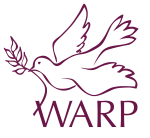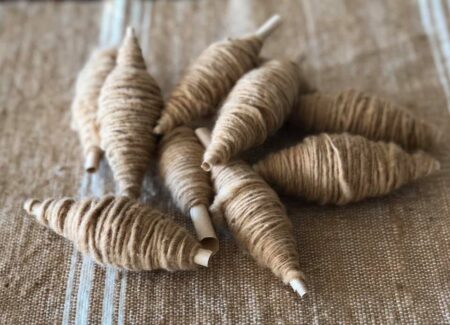by Judy Newland
Photography: Darcy Fabre
As a longtime spinner and weaver – and a mother – this is a story that reflects a love many of us share. It may sweep you away to another time when mothers created piles of beautiful blankets for their daughters, carrying the name l’amour de maman, a mother’s love. They were made of white and brown cotton with occasional indigo dyed yarns, a beautiful tribute to women, fiber and family.
I first heard this love story in 2015, shortly after the film Coton jaune: Acadian Brown Cotton was released. It was produced and directed by Sharon Gordon Donnan along with Suzanne Chaillot Breaux and profiles the history, tradition and beauty of Acadian brown cotton blankets. I met Sharon in 2017 at the ClothRoads film festival in Colorado and we immediately connected over our past work in Peru. This brown cotton story has evolved into a tale of sustainable excitement (in so many ways!) and I have been happily spinning this lovely brown cotton as the story moves forward.
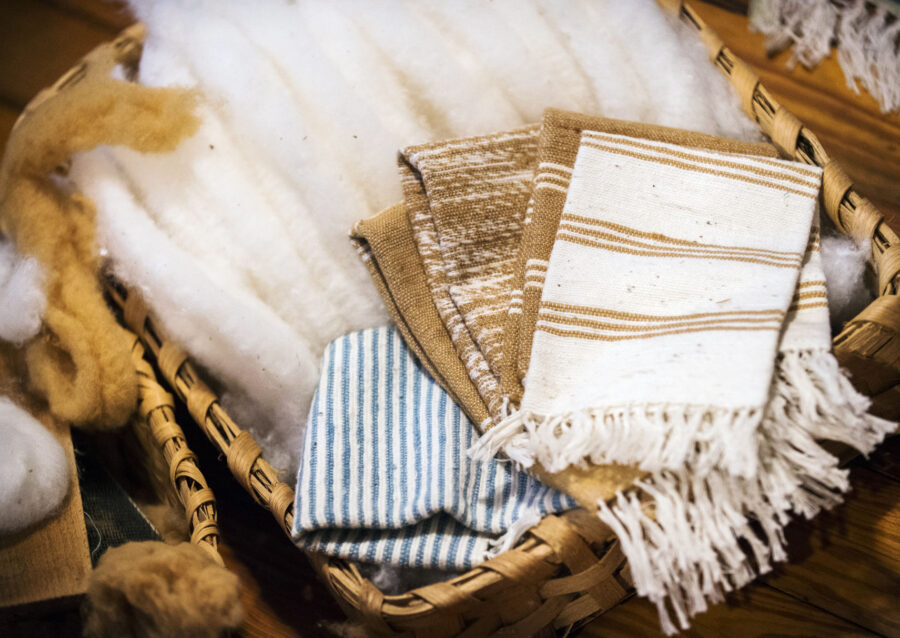
History and Culture
In the 1600s French Catholic colonists left France and settled mostly in the Eastern Canada. Exiled from Nova Scotia in the 1760s by the British, the Cajuns now living in Louisiana are descendants of these Acadians. In Southwestern Louisiana there is a large population of French speaking residents with a strong French Acadian cultural background. They are independent and self-sufficient people who found a way to make their own cloth from local brown cotton.
These hardworking immigrants made a home in the bayous of Louisiana where they created a culture of lively music, spicy food and close family ties, along with a strong weaving tradition with French roots stretching back 250 years. Looms, spinning wheels and the striped designs of the fabric all come from the original French tradition that the Acadians brought with them and spinning, weaving and growing brown cotton were an integral part of daily family life in rural Louisiana through the end of the 19th century.
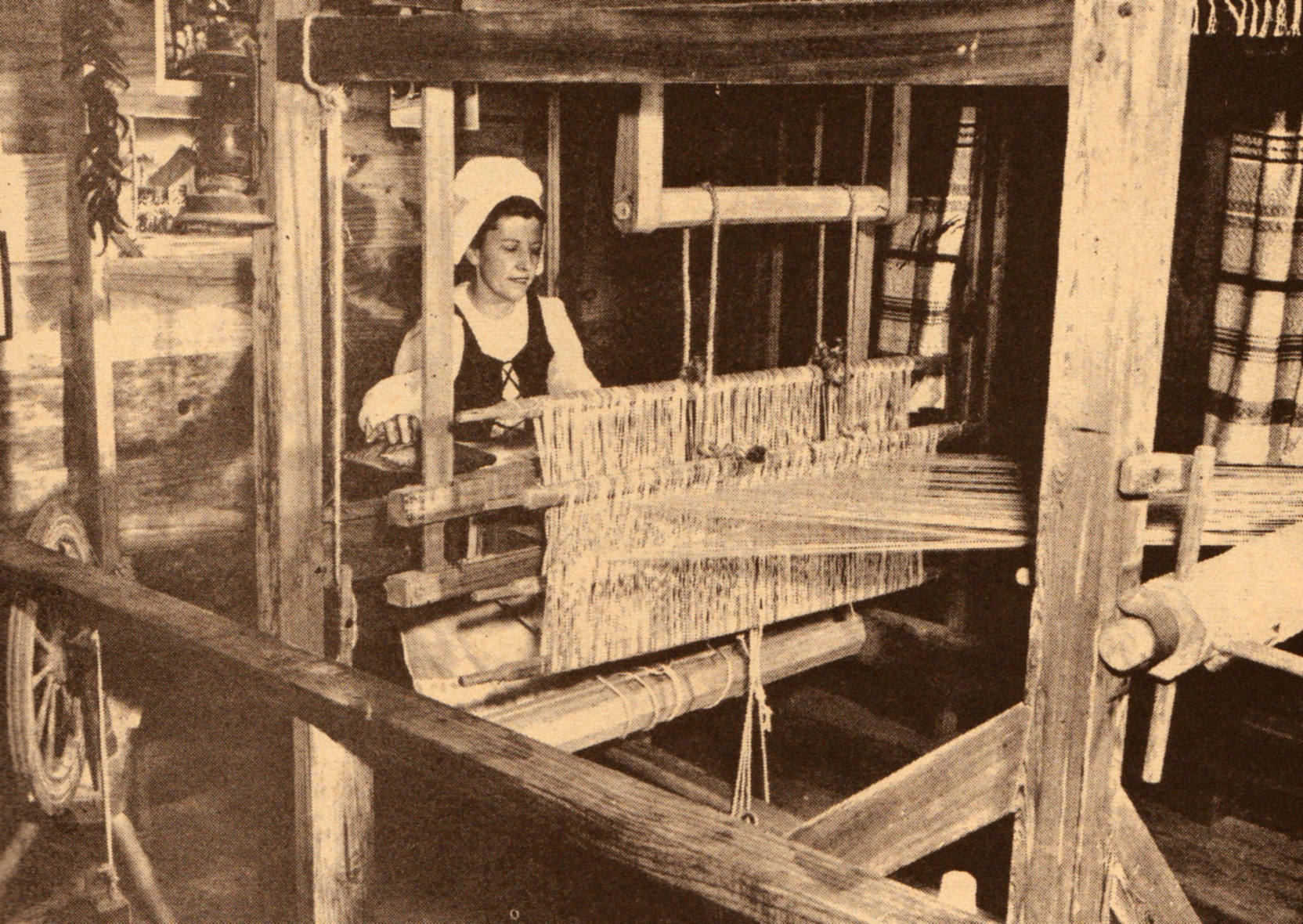
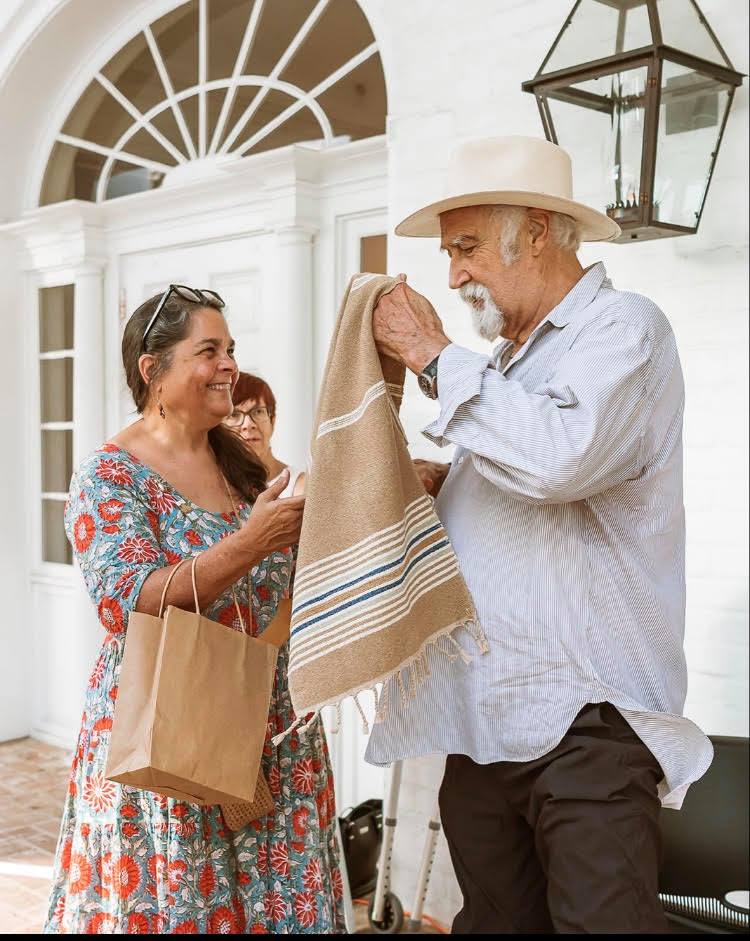
Plants and People
Gossypium hirsutum is a New World cotton variety that has a hairless seed coat that is easier to gin by hand. Careful selection, saving and replanting of Acadian brown cotton was part of life in Acadiana and generations of Acadians in Louisiana continued a vigorous seed selection regimen for over 200 years. This insured the survival of this variety of brown cotton, now preserved in the University of Louisiana Lafayette seed bank.
The Field to Fashion Project team, under the umbrella of the Acadian Brown Cotton project, has continued to grow over the past five years, adding new members with expertise in various areas, from seed saving to growing crops of brown cotton. Historians, designers and artists add depth of knowledge and creativity to the ABC project, expanding the reach of brown cotton throughout Louisiana and beyond. Farmers continue to join the project, often growing brown cotton as a second crop, committed to sustainable cultivation of the heirloom seeds.
In their presentations in the WARP Panel Presentation, Jennie Lallande and Randon Dufrene talked about sustainably growing brown cotton through regenerative agriculture. The Five principles of RA are stated on the ABC website and serve as key guidelines for the continued growth of Acadian brown cotton.
As fields and farms expanded, Sharon and her cotton gang assisted The Hilliard University Art Museum at the University of Louisiana – Lafayette with the featured exhibit, Acadian Brown Cotton: The Fabric of Acadiana. Sharing the amazing history of Acadian Brown Cotton with the larger world was a milestone on this journey.
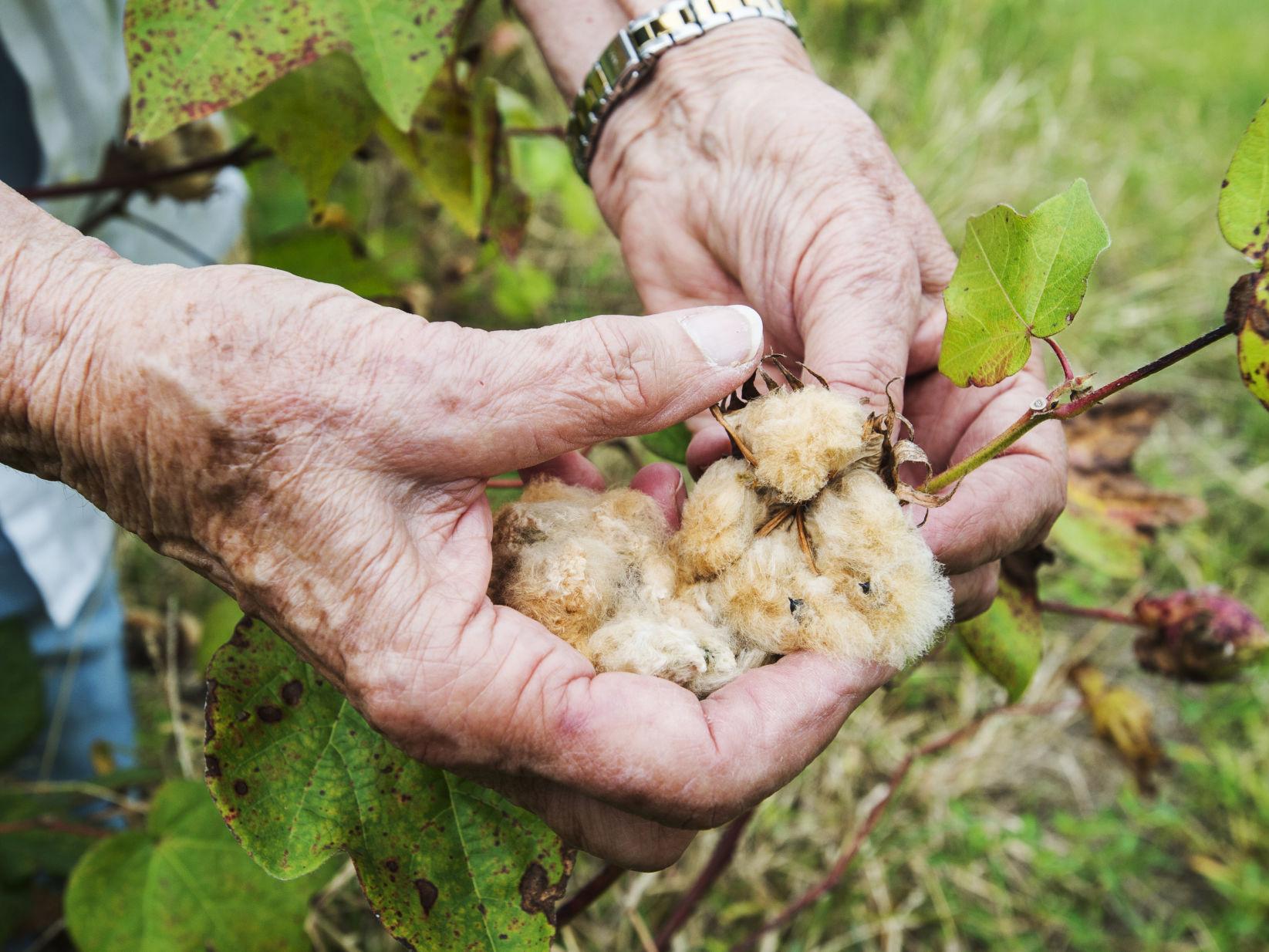
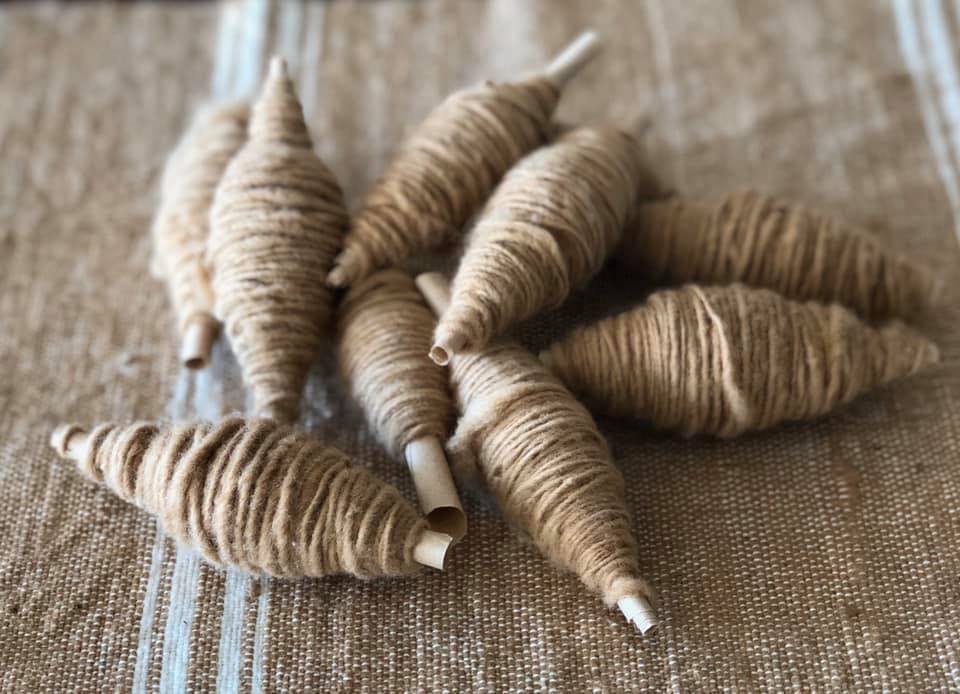
Fibershed and the Future
People of Louisiana are joining others around the world in supporting sustainable cotton projects in their own backyards. The Acadian Brown Cotton project is now part of Fibershed; the Acadiana affiliate covers 22 parishes in the state. Enough brown cotton is now being grown that Belfast Mini Mills on Prince Edward Island will soon be carding, producing roving and eventually spinning brown cotton for ABC. Members of the group recently participated in the Folklife Festival at the Smithsonian, joining with Around the World in 80 Fabrics. ABC resident artist Darcy Fabre gave presentations and demos on Acadian Brown Cotton. ABC is now one of the 80 fabrics and will soon be traveling the world, telling a tale of endurance and love.
If you want to be part of this big sustainable pile on, connect with The Field to Fashion Acadian Brown Cotton project. Resources are available on their website: www.acadianbrowncotton.com.
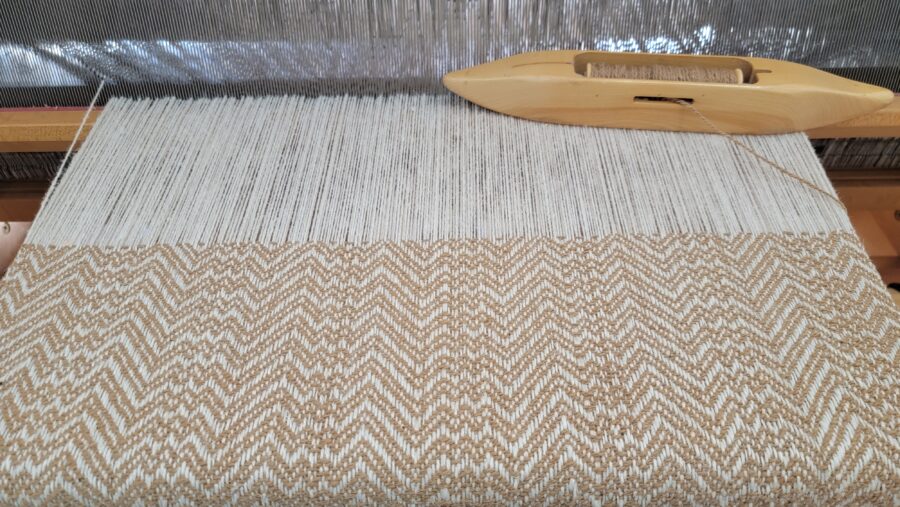
Judy Newland worked in the museum field for over 20 years at a variety of university museums, including art and anthropology, specializing in the design and development of exhibitions and teaching museum courses. A weaver, spinner, and dyer for over 40 years, she concentrates on weavings that spring from cultural ideas and process. Her research includes archaeological textile fieldwork in Peru, weaving in the Southwest and indigo dye processes and cultural practices around the world.

Una historia de amor cajun – Algodón marrón Acadiano
Por Judy Newland
Photography: Darcy Fabre
Como hilandera y tejedora desde hace mucho tiempo, y como madre, esta es una historia que refleja un amor que muchos de nosotros compartimos. Puede que te lleve a otra época en la que las madres creaban montones de hermosas mantas para sus hijas, que llevaban el nombre de “L’amour de maman” ( el amor de una madre). Estaban hechos de algodón blanco y marrón con hilos teñidos de índigo ocasionales, un hermoso tributo a la mujer, la fibra y la familia.
Escuché por primera vez esta historia de amor en 2015, poco después de que la película “Coton jaune: Acadian Brown Cotton” fuera lanzada. Esta pelicula fue producida y dirigida por Sharon Gordon Donnan junto con Suzanne Chaillot Breaux y describe la historia, la tradición y la belleza de las mantas de algodón marrón de Acadia. Conocí a Sharon en 2017 en el festival de cine ClothRoads en Colorado e inmediatamente nos conectamos por nuestro trabajo anterior en Perú. Esta historia de algodón café se ha convertido en una historia de emoción sostenible (¡De muchas maneras!) y he estado hilando felizmente este hermoso algodón marrón a medida que avanza la historia.

Historia y Cultura
En la década de 1600, los colonos católicos franceses abandonaron Francia y se establecieron principalmente en el este de Canadá. Exiliados de Nueva Escocia en la década de 1760 por los británicos, los cajunes que ahora viven en Luisiana son descendientes de estos acadianos. En el suroeste de Luisiana hay una gran población de residentes de habla francesa con un fuerte trasfondo cultural francés acadiano. Son personas independientes y autosuficientes que encontraron la manera de hacer su propia tela con algodón marrón local.
Estos inmigrantes trabajadores construyeron un hogar en los pantanos de Louisiana, donde crearon una cultura de música animada, comida picante y lazos familiares cercanos, junto con una fuerte tradición de tejido con raíces francesas que se remonta a 250 años atrás. Los telares, las ruecas y los diseños a rayas de las telas provienen de la tradición francesa original que trajeron los acadianos. Hilar, tejer y cultivar algodón marrón fueron una parte integral de la vida familiar diaria en las zonas rurales de Luisiana hasta finales del siglo XIX.


Plantas y Personas
Gossypium hirsutum es una variedad de algodón del Nuevo Mundo que tiene una cubierta de semilla sin pelo que es más fácil de deshacer a mano. La cuidadosa selección, conservación y replantación del algodón marrón acadiano formaba parte de la vida en Acadia y generaciones de acadianos en Luisiana continuaron con un vigoroso régimen de selección de semillas durante más de 200 años. Esto aseguró la supervivencia de esta variedad de algodón marrón, que ahora se conserva en el banco de semillas de la Universidad Lafayette de Louisiana.
El equipo del proyecto “Field to Fashion”, bajo el cuidado del proyecto “Acadian Brown Cotton”, ha seguido creciendo durante los últimos cinco años, agregando nuevos miembros con experiencia en diversas áreas, desde el almacenamiento de semillas hasta el cultivo de algodón marrón. Los historiadores, diseñadores y artistas aportan conocimientos profundos y creatividad al proyecto, ampliando el alcance del algodón marrón en Luisiana y más allá. Los agricultores continúan uniéndose al proyecto, a menudo cultivando algodón marrón como segundo cultivo, comprometidos con el cultivo sostenible de las semillas tradicionales.
En sus presentaciones en el panel de WARP, Jennie Lallande y Randon Dufrene hablaron sobre el cultivo sustentable de algodón marrón a través de la agricultura regenerativa.. “Los Cinco principios de RA” se establecen en el sitio web de ABC y sirven como pautas clave para el crecimiento continuo del algodón marrón de Acadia.
A medida que los campos y las granjas se expandían, Sharon y su grupo algodonero ayudaron al Museo de Arte de la Universidad Hilliard en la Universidad de Luisiana – Lafayette con la exhibición destacada “Algodón marrón acadiano: la tela de Acadia”.
Compartir la increíble historia de “Acadian Brown Cotton” con el resto del mundo fue un hito en este viaje.


El futuro en Fibershed
La gente de Luisiana se está uniendo a otros en todo el mundo para apoyar proyectos de algodón sostenible desde sus propias casas. El proyecto Acadian Brown Cotton ahora es parte de Fibershed; la filial de Acadianos cubre 22 puntos en el estado. Ahora se cultiva suficiente algodón marrón, así que Belfast Mini Mills en la Isla del Príncipe Eduardo pronto empezará a cardar, producir y eventualmente hilar algodón marrón para ABC. Los miembros del grupo participaron recientemente en el Festival Folklife en el Smithsonian, uniéndose a “Around the World in 80 Fabrics”. El artista residente de ABC, Darcy Fabre, hizo presentaciones y demostraciones sobre Acadian Brown Cotton. ABC es ahora uno de los 80 tejidos y pronto estará viajando por el mundo, contando una historia de resistencia y amor.
Si desea ser parte de este gran grupo sustentable, conéctese con el proyecto “The Field to Fashion Acadian Brown Cotton”. Los recursos están disponibles en su sitio web:
http://www.acadianbrowncotton.com

Judy Newland trabajó en el campo de los museos durante más de 20 años en distintos museos universitarios, incluidos los de arte y antropología, y luego se especializó en el diseño y desarrollo de exposiciones y en la enseñanza de cursos de museos. Tejedora, hilandera y tintorera durante más de 40 años, se concentra en tejidos que surgen de ideas y procesos culturales. Su investigación incluye trabajo de campo textil arqueológico en Perú, tejido en el suroeste y procesos de tinte con índigo y prácticas culturales en todo el mundo.
